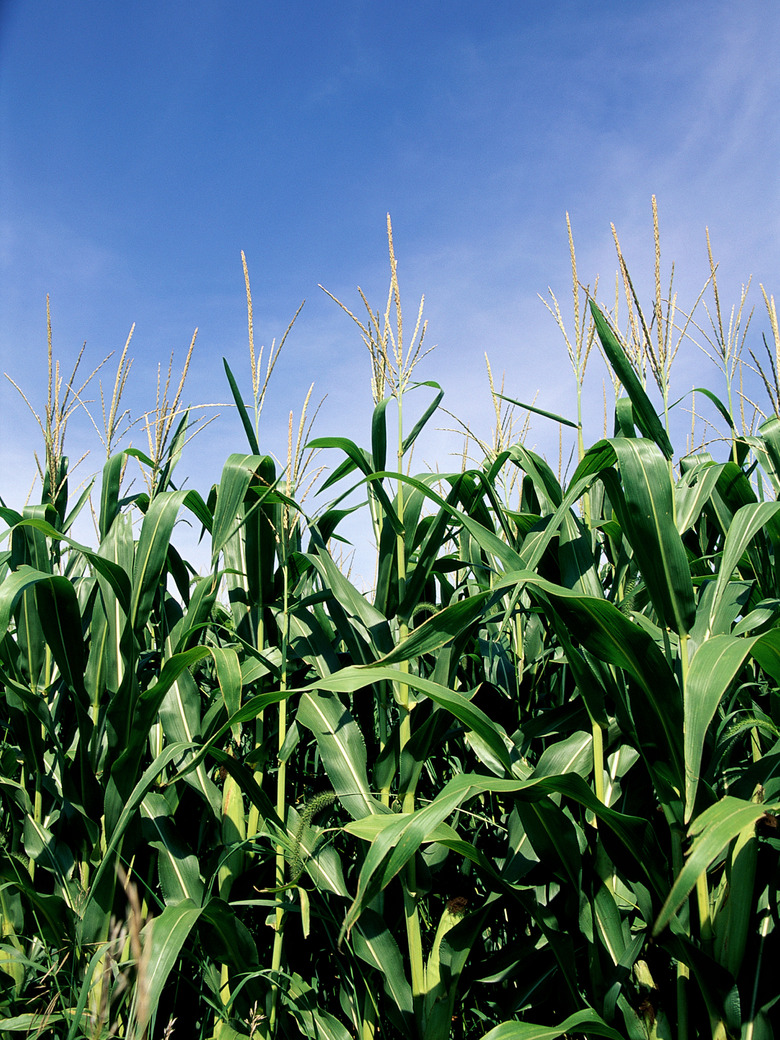Two Environmental Factors That Affect Transpiration
Transpiration is a biological process that is fundamental to the cycle by which water moves from the atmosphere to the Earth and back into the atmosphere. The entire process of water movement through a plant is included in the definition of transpiration, but this term most specifically refers to the final step in which leaf tissue releases liquid water into the atmosphere as water vapor. Plants have a limited ability to regulate their movement of water, but environmental factors nonetheless have significant effects on transpiration.
Water in Motion
Water in Motion
Growing plants absorb soil water through their roots, transport it upward through their stems, and release it as water vapor into the surrounding air through microscopic leaf pores, called stomata. Transpiration is essential to plant life because it allows minerals and sugar, which are dissolved in this moving water, to reach all parts of the plant. Leaves can only perform photosynthesis, the process by which plants make food from sunlight, when stomata are open and thus allowing carbon dioxide, which is needed for photosynthesis, to enter the leaf. When no light is available for photosynthesis, stomata are usually closed to conserve moisture. This means that under natural growing conditions, transpiration occurs primarily during the day.
Plants in Control
Plants in Control
Transpiration is vital to plant growth, but excessive transpiration can be harmful. During times of drought, for example, transpiration can injure a plant if the leaves release more moisture than the roots can absorb. Drought and other stressful environmental conditions trigger plants to release a hormone that causes stomata to close; this reduces the rate of moisture loss and protects the plant from dehydration. But this is only a temporary solution because transpiration is essential for life: plants cannot carry out photosynthesis when their stomata are closed, and reduced transpiration leads to reduced transport of nutrients.
Water in the Air
Water in the Air
The fundamental environmental factor is the relative humidity of the air surrounding the plant. Relative humidity measures the amount of water vapor in air as a percentage of the maximum amount of water vapor that air could hold at its current temperature. The difference between the relative humidity of the leaf — which is near 100 percent under normal growth conditions — and the relative humidity of the air determines the strength of the force that drives water vapor from the leaf to the air. Thus, transpiration is slower during humid weather and faster during dry weather.
Evaporative Cooling
Evaporative Cooling
Ambient temperature both directly and indirectly influences a plant's transpiration rate. The indirect action involves temperature's effect on humidity: warm air can hold more moisture than cold air. If a body of air contains a certain amount of moisture and then the temperature of that same air increases, the amount of moisture remains the same but the moisture capacity increases — in other words, relative humidity goes down, leading to higher transpiration rates. Temperature has a direct influence because leaves use transpiration to cool themselves, just as the human body cools itself by secreting moisture onto the skin. As ambient temperature rises, leaves attempt to maintain appropriate internal temperatures by increasing the amount of moisture that evaporates through the stomata.
Cite This Article
MLA
West, Joseph. "Two Environmental Factors That Affect Transpiration" sciencing.com, https://www.sciencing.com/two-environmental-factors-affect-transpiration-8588/. 24 April 2017.
APA
West, Joseph. (2017, April 24). Two Environmental Factors That Affect Transpiration. sciencing.com. Retrieved from https://www.sciencing.com/two-environmental-factors-affect-transpiration-8588/
Chicago
West, Joseph. Two Environmental Factors That Affect Transpiration last modified August 30, 2022. https://www.sciencing.com/two-environmental-factors-affect-transpiration-8588/
